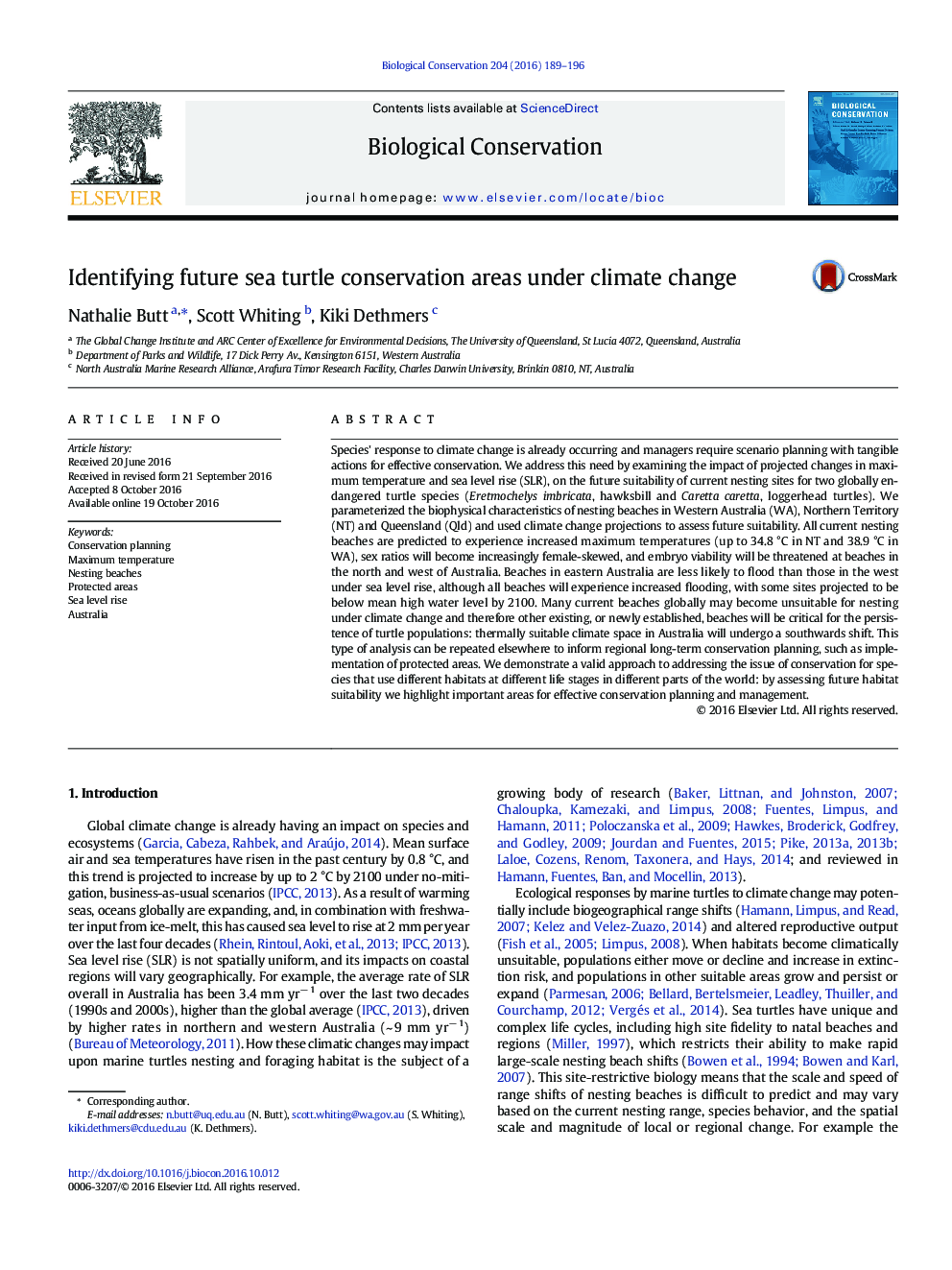| کد مقاله | کد نشریه | سال انتشار | مقاله انگلیسی | نسخه تمام متن |
|---|---|---|---|---|
| 5743393 | 1412305 | 2016 | 8 صفحه PDF | دانلود رایگان |
- Sea turtles use a range of habitats over large spatial scales, and are threatened by climate change.
- Projections suggest hawksbill turtles will expand their nesting range.
- Nesting habitat for loggerhead turtles will become increasingly limited.
- Thermally suitable climate space will shift southwards.
- Such scenario planning can inform endangered species management in ecosystems worldwide.
Species' response to climate change is already occurring and managers require scenario planning with tangible actions for effective conservation. We address this need by examining the impact of projected changes in maximum temperature and sea level rise (SLR), on the future suitability of current nesting sites for two globally endangered turtle species (Eretmochelys imbricata, hawksbill and Caretta caretta, loggerhead turtles). We parameterized the biophysical characteristics of nesting beaches in Western Australia (WA), Northern Territory (NT) and Queensland (Qld) and used climate change projections to assess future suitability. All current nesting beaches are predicted to experience increased maximum temperatures (up to 34.8 °C in NT and 38.9 °C in WA), sex ratios will become increasingly female-skewed, and embryo viability will be threatened at beaches in the north and west of Australia. Beaches in eastern Australia are less likely to flood than those in the west under sea level rise, although all beaches will experience increased flooding, with some sites projected to be below mean high water level by 2100. Many current beaches globally may become unsuitable for nesting under climate change and therefore other existing, or newly established, beaches will be critical for the persistence of turtle populations: thermally suitable climate space in Australia will undergo a southwards shift. This type of analysis can be repeated elsewhere to inform regional long-term conservation planning, such as implementation of protected areas. We demonstrate a valid approach to addressing the issue of conservation for species that use different habitats at different life stages in different parts of the world: by assessing future habitat suitability we highlight important areas for effective conservation planning and management.
Journal: Biological Conservation - Volume 204, Part B, December 2016, Pages 189-196
